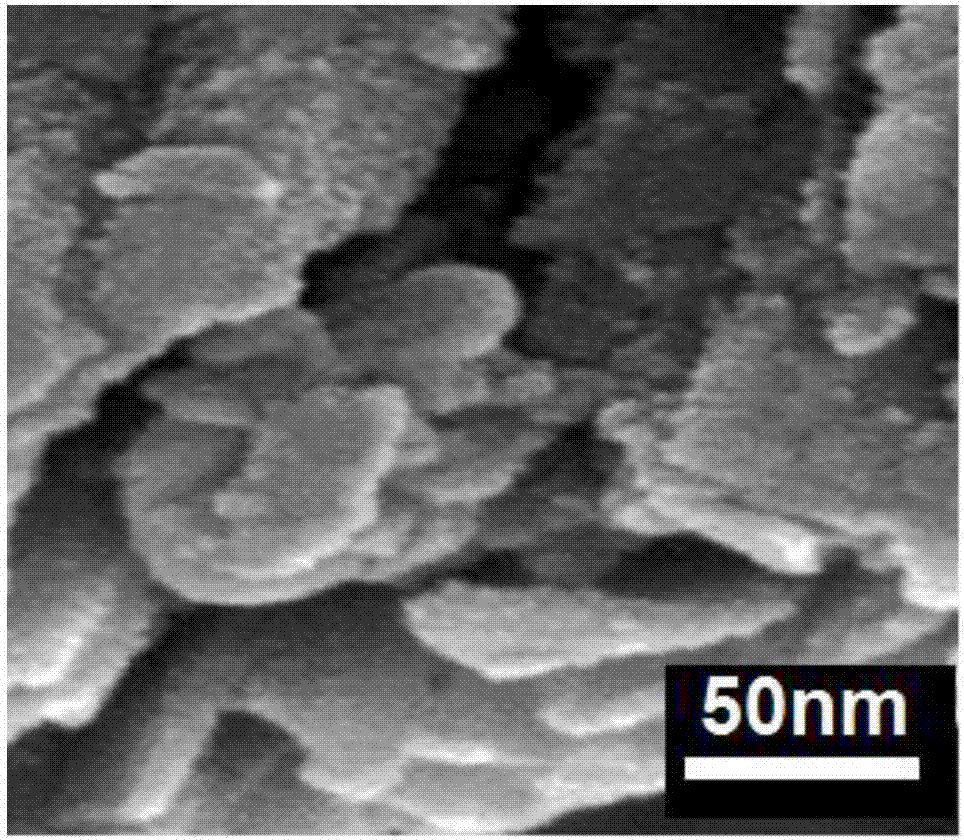Preparation method of solid-state sodium-ion battery electrolyte
A sodium ion battery and electrolyte technology, applied in the field of sodium ions, can solve the problems of high ionic conductivity, no
- Summary
- Abstract
- Description
- Claims
- Application Information
AI Technical Summary
Problems solved by technology
Method used
Image
Examples
Embodiment 1
[0012] Sodium sulfide was dissolved in 1L deionized water, then placed in a constant temperature water bath and heated to 80°C, and sodium antimonate and NH4F were added. The mass ratio of sodium sulfide, sodium antimonate and NH4F was 3.5:1:0.5. After stirring slowly for 4 hours, it was naturally cooled to room temperature and filtered. Dry in an oven at 80°C, then place in a furnace tube, heat to 300°C for reaction, pass in argon as a protective atmosphere, keep warm for 2 hours, and then cool naturally to room temperature. form Na 2.5 Sb 3.5 f 0.5 Lumpy solid where x = 0.5.
Embodiment 2
[0014] Sodium sulfide was dissolved in 1L of deionized water, then placed in a constant temperature water bath and heated to 90°C, and sodium antimonate and NH4F were added. The mass ratio of sodium sulfide, sodium antimonate and NH4F was 1.5:1:2.5. After stirring slowly for 3 hours, it was naturally cooled to room temperature and filtered. Dry it in an oven at 80°C, then put it in a furnace tube, heat it to 400°C for reaction, pass in argon as a protective atmosphere, keep it warm for 1 hour, and then cool it down to room temperature naturally. form Na 0.5 Sb 1.5 f 0.5 Lumpy solid where x = 2.5.
Embodiment 3
[0016] Sodium sulfide was dissolved in 1L deionized water, then placed in a constant temperature water bath and heated to 90°C, and sodium antimonate and NH4F were added. The mass ratio of sodium sulfide, sodium antimonate and NH4F was 3:1:1. After stirring slowly for 3 hours, it was naturally cooled to room temperature and filtered. Dry in an oven at 70°C, then place in a furnace tube, heat to 300°C for reaction, pass in argon as a protective atmosphere, keep warm for 1 hour, and then cool naturally to room temperature. form Na 2 Sb 3 F Lumpy solid where x=1.
PUM
| Property | Measurement | Unit |
|---|---|---|
| Conductivity | aaaaa | aaaaa |
Abstract
Description
Claims
Application Information
 Login to View More
Login to View More - R&D
- Intellectual Property
- Life Sciences
- Materials
- Tech Scout
- Unparalleled Data Quality
- Higher Quality Content
- 60% Fewer Hallucinations
Browse by: Latest US Patents, China's latest patents, Technical Efficacy Thesaurus, Application Domain, Technology Topic, Popular Technical Reports.
© 2025 PatSnap. All rights reserved.Legal|Privacy policy|Modern Slavery Act Transparency Statement|Sitemap|About US| Contact US: help@patsnap.com

